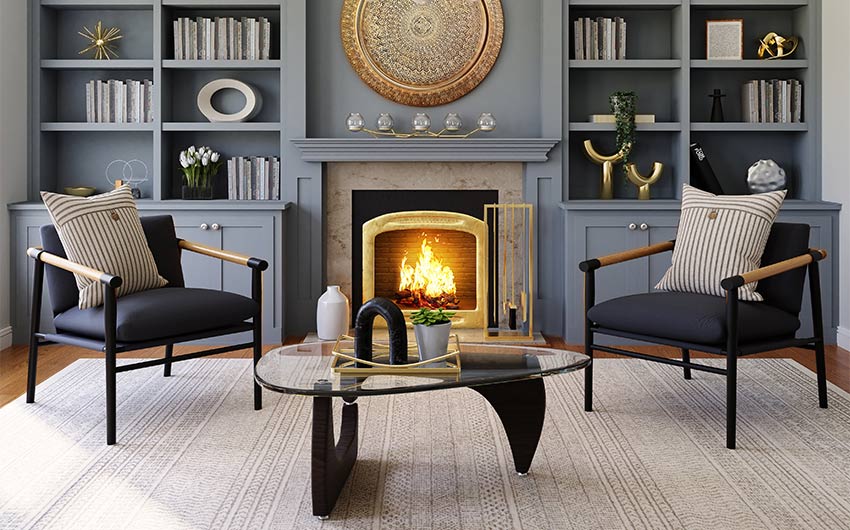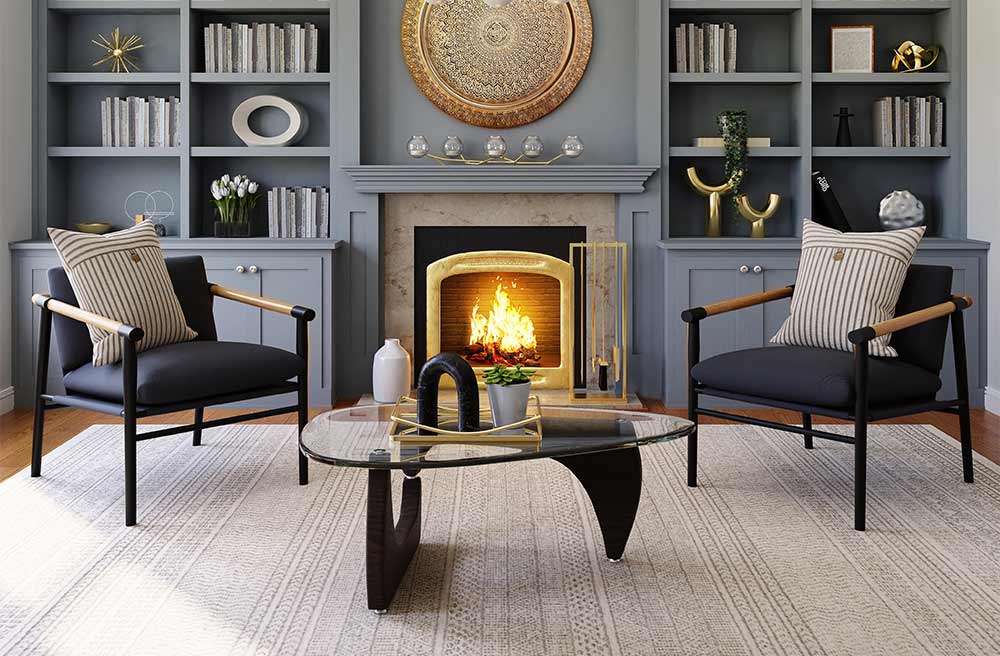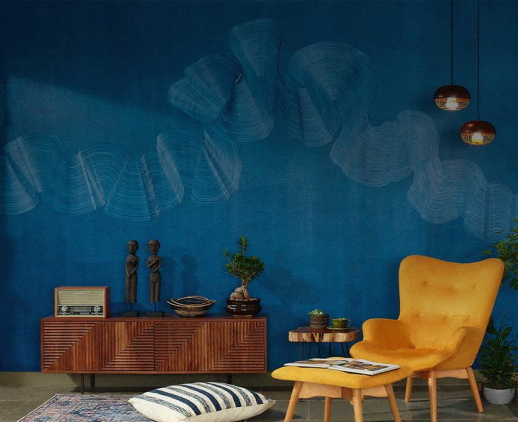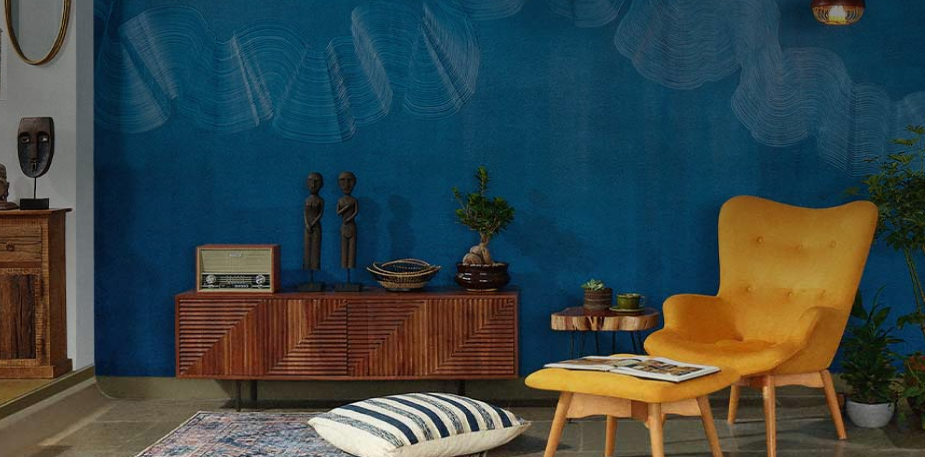Get your home interior design budget estimate
The 7 principles of design in interior design

The best interiors begin with these basic design principles
Interior design is more than just a creative and intuitive process – like all good design, the practice is rooted in a set of basic but pertinent principles. For most of us, home interior design projects begin with a mood board that we piece together by pinning the best home décor ideas online and by bookmarking the enviable homes we see in design magazines. A quick lesson on the basic principles of design interior design will help you approach all the design inspiration you seek with a fresh pair of eyes to truly understand what works for your home design.
So whether you are considering a DIY makeover for a part of your home interiors or working towards a complete construction overhaul with the help of professionals, get familiar with the basic principles of design interior design before embarking on your dream project.
The seven basic principles of interior design are Balance, Harmony, Rhythm, Proportion and Scale, Emphasis, Contrast and Details.
1. Balance
The hallmark of a well-designed room is the visual balance between all the elements that make up the room – from colours, lines and forms to furniture, lighting and décor. A properly balanced room exudes a sense of quiet confidence and calm in home interior design. In order to better understand the principle of balance, let’s take a quick look at the three different kinds of balance most commonly employed in interior design:
Symmetrical or Formal Balance
Symmetrical or formal balance is the first and most frequently used approach to balance in interior design. To achieve symmetrical balance, a space is evenly divided into two sides that mirror each other.

Image courtesy, Collov home design/ unsplash
For instance, a pair of sofas or lounge chairs that face each other with a centre, coffee table placed between them in a living room. A pair of side tables with the same lamps on both sides of a bed in a bedroom is another example of symmetrical balance. It’s important to remember that in modern interior design, too much symmetry in a room can overwhelm the space, feel rigid or even boring.
Asymmetrical Balance
Asymmetrical balance is a modern approach in interior design principles that offers more flexibility while decorating a room. Instead of relying on mirroring or using identical objects, the key is to create a balance between the visual weight of objects that are similar in size, shape and dimensions. For example, wingback chairs can be placed opposite a large sofa in a living room.
Radial Balance
Radial balance is a complex approach and it isn’t easy pull off, especially in smaller spaces. One focal element, such as a circular dining table or chandelier is at the heart of radial design and all the other objects are centred around it.
Style Tip:
Balance in home interior design also extends to the positive and negative spaces in a room. For example, if there is too much negative space in a room, it will feel sparse, empty or even unfurnished. Whereas, if a room is filled with too much furniture and too many décor objects, it will feel cluttered, messy and overcrowded. A minimally designed room uses a lot more negative space while a cosier, more inviting space can be created by reducing the negative space between objects.

Image courtesy, Spacejoy/ unsplash
2. Harmony
Harmony in interior design principles is a sense of cohiveness in style, theme, aesthetic, mood 0r even the personality of a space. Think of it as a sense of belonging and unity that anchors the interior design and style of a room. This doesn’t mean that every element or home décor object in the room must be identical or fall under the same category but there must be a some way in which all of them compliment one another. For instance, using the same colour scheme to accentuate a room.
Style Tip:
If you’re having a hard time figuring out a theme or style for your interior design project, start with an object you love. It could be a piece of art or a patterned fabric or even a piece of furniture. Make that your focal point and let it guide the rest of the selections for the space.
3. Rhythm
You might wonder what rhythm is doing on a list of interior design principles but just as in music, there cannot be any harmony without rhythm. Rhythm is the use of colours, patterns and textures in repetition or contrast to create visual interest and movement that in turn guides your eyes through the room. For example, you can use the same colours in a room at different intervals, a yellow wall can be complimented by yellow cusion covers used on a sofa that’s placed against a differently coloured wall followed by a piece of art with yellow accents elsewhere.
Style Tip:
While mixing patterns and colours, keep in mind the general “Rule of Three” – pick a base, neutral or primary element and pair it with two smaller patterns or colours. Mixing just two elements can pass off as simply a “mismatch”. The easiest and most convenient way to practice rhythm is to invest in smaller accessories, photographs, artwork and cushions.
4. Proportion and Scale
Now that we’ve gone over the principles of balance and harmony, it’s time to tackle the basic principle of interior design that actually guides them – Proportion and Scale. Scale is how the size of one object in the room compliments or contrasts the size of all the other objects in the space or even in relation to human scale. Proportion is more relative and is all about the general relationship between differently sized objects.
While this may seem a bit more scientific and mathematical, you don’t necessarily have to rely on experts to help you figure it out. Always refocus to the bigger picture and rely on your eyes for guidance.

Image courtesy, Spacejoy/ unsplash
For instance, it’s easy to see how a large wingback chair is out of place when its placed next a small, stubby coffee table. Here, you can see how the height of the desk is set to match the height of the window frame. Long ceiling-to-floor curtains are used to make the room seem taller than it is. Similarly, small pots of tall plants are placed on one side of the desk while shorter plants on tall planters sit elegantly on the opposite side.
Style Tip:
While picking artwork for a room, a general rule to remember is that the frame must be half or two-third of the width of the piece of furniture it’s placed over – for example, a sofa in the living room or the bed in the bedroom design.

Image courtesy, Spacejoy/ Unsplash
5. Emphasis
While balance and harmony are the cornerstones of good interior design, simply adhering to the two can lead to a sense of monotony and rigidity in a space. This is where the basic principle of emphasis comes in. Emphasis is simply the use of a focal element that anchors a space – for instance, a striking chandelier in the living room.
There are many ways to implement this principle in home interior design, whether it’s a statement wall with a wallpaper or bright colour; a structural piece of furniture like a designer coffee table; or even an in-built point of interest such as a large window with a view.
Style Tip:
Accent lighting in home décor ideas is any light that is used to accentuate a specific part of a room or bring focus to a specific object such as a piece of art. An accent light can also be a chandelier or a statement lamp itself.
6. Contrast
Yin and Yang; Ebony and Ivory; Opposites attract – There’s a place for all of these concepts and more when it comes to home interior design. There is a sense of playfulness, drama, variety and visual interest in contrast. Contrast as a basic principle of interior design can refer to contrasting colour combinations; contrasting patterns like stripes with florals; contrasting styles like Scandinavian minimalism with a bit of bohemia (as seen here); contrasting textures like matte and glossy paint; and even contrasting shapes – think hard-angled geometric furniture with sculptural lighting and more. Without contrast, a room can seem dull, flat and one-note.
Style Tip:
The size of a space must be taken into consideration before you consider contrasting different elements. For example, very large or varying patterns can overwhelm a small space. Clashing or contrasting patterns are better suited to larger spaces.

Image courtesy, Spacejoy/ Unsplash
7. Details
Attention to detail is the last of the basic principles of interior design but there’s a reason why it’s literally used as a figure of speech. All good design finally comes down to the nitty-gritties. A well designed room without finishing touches will always feel impersonal and incomplete. It’s also the one design principle that you can truly indulge in, without the supervision of an interior design professional. This last step in the home interior design process allows you the freedom to truly make the space your own and infuse it with your personality, interests and more. From the shape and size of light switches and hardware like door knobs to throws, pillows and rugs – it’s these little things that add character to the room.
Style Tip:
It’s easy to lose steam towards the end of a home renovation project but detailing in a rushed, haphazard manner will leave a space looking and feeling unfinished and lacking in finesse. A good way to tackle this fatigue is to make selections for the detailing at the same time you’re picking out the big-ticket items like furniture and lighting.

Get Started with your interior design journey with us!
Speak to our design professionals
What’s the status of your home possession?
What’s the condition of your home/space?
Will you be living in your space during the renovation?
 Previous Question
Previous Question
Is your interior design budget over 4 lakhs?
 Previous Question
Previous Question
Book next available appointment slots with our experts!
Please Select Date and Day
 Previous Question
Previous Question

Something went wrong!
We were unable to receive your details. Please try submitting them again.

Appointment Scheduled!
Thank you for giving an opportunity to Asian Paints Beautiful Homes Service! Our Customer Experience Specialist will get in touch with you soon.
Appointment Date & time
Thank You!
Our team will contact you for further details.
What’s the status of your home possession?
What’s the condition of your home/space?
Will you be living in your space during the renovation ?
 Previous Question
Previous Question
Is your interior design budget over 4 lakhs?
 Previous Question
Previous Question
Book next available appointment slots with our experts!
DEC 2023
Please Select Date and Day
 Previous Question
Previous Question

Something went wrong!
We were unable to receive your details. Please try submitting them again.

Appointment Scheduled!
Thank you for giving an opportunity to Asian Paints Beautiful Homes Service! Our Customer Experience Specialist will get in touch with you soon.
Appointment Date & time
17 Oct 23, 03.00PM - 04.00PM





































